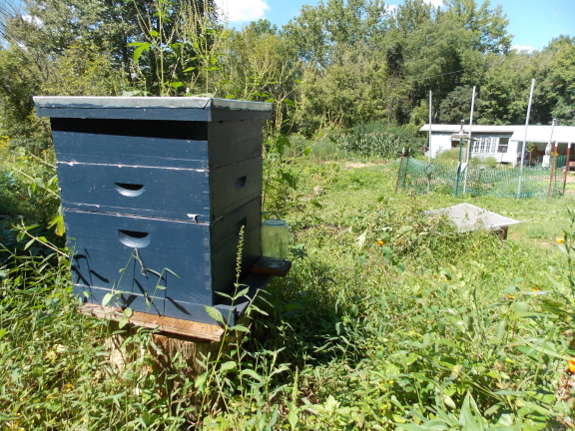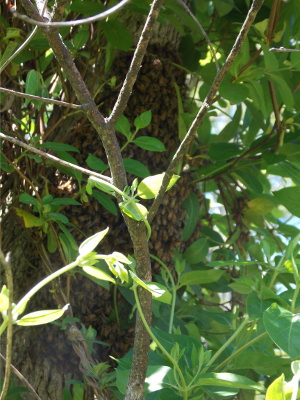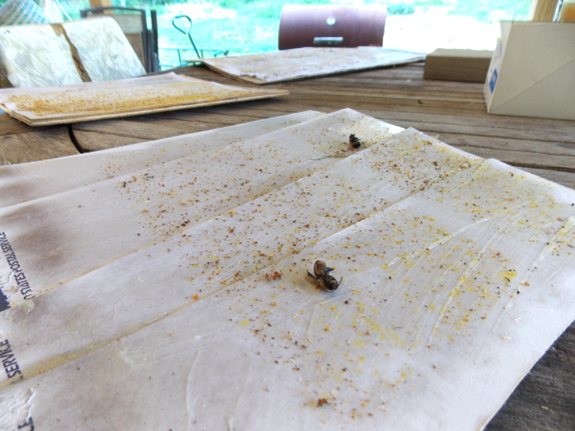
Pros and cons of swarming for mite prevention

I go back and forth
on the issue of swarm management. For years, I very
successfully managed
my hives so they wouldn't swarm, but this year I toed the Warre line and let my
hive release a swarm.

Before I go into the
results of that swarm, I figured I should back up and tell those
of you without bees a bit about why hives swarm. If it's
healthy, most bee hives have the impulse to reproduce in the
spring, but they reproduce at the super-organism level. So,
rather than producing an apple like a tree does, a bee hive
produces a swarm, complete with everything needed to start a new
colony (queen and workers).
Unfortunately, a hive
that puts all that energy into building a swarm tends not to put
away much honey. Which is why so many beekeepers manage
hives to prevent swarms. On the other hand, my autumn varroa
mite counts
confirmed the big benefit of allowing swarming in a chemical-free
bee hive. Our mother hive (which released a swarm this
spring) had a grand total of 6 varroa mites on the sticky board
after a three day count, and the swarm we caught dropped only 1
mite during the same three days. In contrast, the sticky
board beneath the package we purchased this spring contained 86
mites.

To put those numbers
in perspective, you have to estimate
how many mites that would be per thousand bees in the hive (or at least guesstimate
the relative size of the colonies). This year's package hive
is one of the strongest I've raised, so it's to be expected that
more bees would host more mites. However, I can't imagine
there are more than twice as many bees in the package hive
compared to the other two colonies, so swarming definitely helped
break the pest cycle in the other two hives.
Whether the benefits
of swarming will outweigh the lower honey yields on our farm is
yet to be seen. I'd really love to eventually develop a
beekeeping method that both keeps bees alive without chemicals and provides sweet treats
for the beekeeper.
Want more in-depth information? Browse through our books.
Or explore more posts by date or by subject.
About us: Anna Hess and Mark Hamilton spent over a decade living self-sufficiently in the mountains of Virginia before moving north to start over from scratch in the foothills of Ohio. They've experimented with permaculture, no-till gardening, trailersteading, home-based microbusinesses and much more, writing about their adventures in both blogs and books.
Want to be notified when new comments are posted on this page? Click on the RSS button after you add a comment to subscribe to the comment feed, or simply check the box beside "email replies to me" while writing your comment.
- Remove comment
